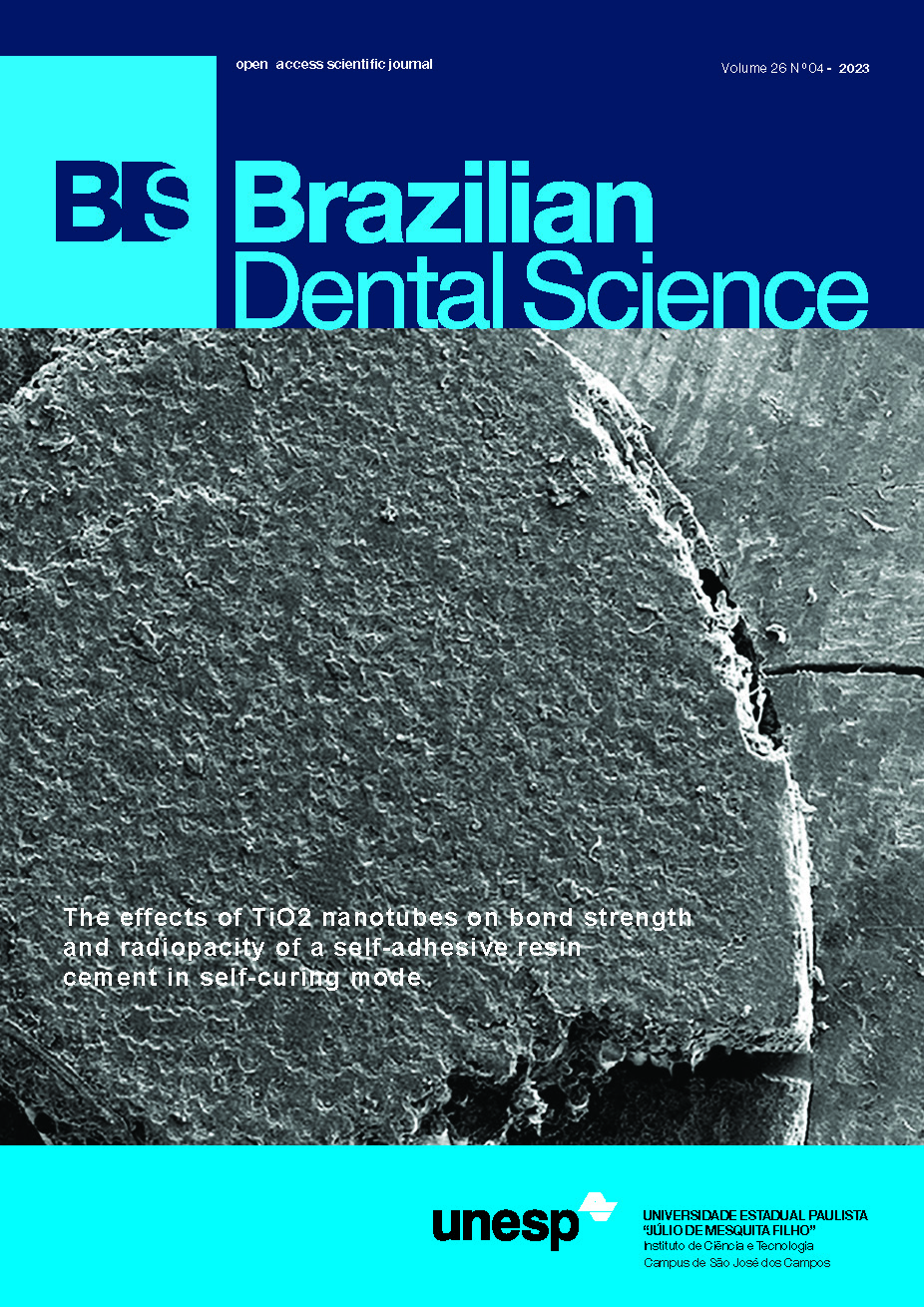Light-curing of calcium hydroxide-based liners: pH analysis and calcium ion release
DOI:
https://doi.org/10.4322/bds.2023.e3945Abstract
Objective: Compare the pH values and calcium ion release of calcium hydroxide-based liner materials before and after light-curing. Material and Methods: The materials evaluated were: hydrox-cal white (HW), hydroxcal dentin (HD), Biocal (BC) and UltraBlend Plus (UB). 120 samples of the liner materials were inserted into a PVC tube (n=15). The samples from HW+A, HD+A, BC+A and UB+A were subjected to photoactivation. The other groups HW+N, HD+N, BC+N and UB+N were only inserted in a glass tube with deionized water. The pH was measured 24 hours and 14 days after the inclusion of the samples with the aid of a pH meter. The calcium release was analyzed with the aid of an atomic absorption spectophotometer at 24h and 14 days. The results were submitted to the Shapiro-Wilk test, followed by ANOVA and Tukey test (p=0.05). Results: In 24h, the groups that were not light cured showed the highest pH values (p<0.05). In 14 days, BC+N and BC+A demonstrated the lowest pH values. The groups that were not light cured also showed higher calcium release values in 24h and 14 days (p<0.05). Conclusion: Photoactivation of calcium hydroxide-based liner materials negatively interferes with calcium ion release, as well as with pH.
KEYWORDS
Acidification; Alkalinization; Calcium hydroxide; Hydrogen-ion concentration; Light-curing.
Downloads
Published
How to Cite
Issue
Section
License
Brazilian Dental Science uses the Creative Commons (CC-BY 4.0) license, thus preserving the integrity of articles in an open access environment. The journal allows the author to retain publishing rights without restrictions.
=================




























